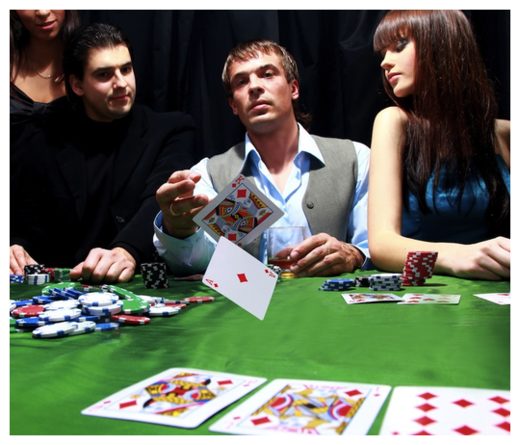
© EDHAR, ShutterstockPlaying poker in Vegas is different than playing online. The human brain responds differently when making decisions involving other people versus when playing games against computers, according to research published July 6 in the journal Science.
Interacting with a person really is different from interacting with a computer - and the brain knows it.
Researchers have discovered that a region of the brain known to be important for understanding others' minds only gets active when people have to make
decisions about social situations, but not when they have to make similar decisions without other human involvement.
"Basically, it's triggering the brain to play by different rules," said study researcher Scott Huettel, a neuroscientist at Duke University.
Making decisionsA long line of economics and psychology studies have found that humans tend to make different decisions when they're interacting with people than when they're interacting with a computer, Huettel told LiveScience. People are usually very good at weighing social information in decision-making: They focus on key players when making group decisions, they can tell the different between
someone employing a strategy and someone acting randomly, and when they need to compare themselves to others, they tend to draw conclusions based on similar people.
Huettel and his colleagues wanted to understand how the brain differs when it has to make decisions in a social context versus a non-social one. To find out, they arranged for 18 volunteers to play a series of
simplified poker games with both computers and a human opponent.
In both cases, the decision to make was the same. Participants were given either a high or low card and had to decide whether to bet against their opponent. If their card beat out their opponent's, or if they bluffed with a low card so that their opponent folded, the participant won money. Otherwise, the opponent got paid.
Before the experiments, the participants met their opponent and shook hands, making the situation as obviously social as possible, Huettel said. They were also told which games would be against a person and which were against a computer. The games then took place as participants rested inside a functional magnetic resonance imaging machine (fMRI). The fMRI measured blood flow to various brain regions in real time. An increase in blood flow to a specific region is a sign that region is becoming more active.



Comment: Leah Giarratano brings up several valid points, but, again, it's important to emphasize the genetic factor of psychopathy, including the fact that many psychopaths are quite difficult to detect and have no interest in committing murder and walk amongst us unnoticed for the most part. Also, their rehabilitation is impossible and useless, something that teaches them to be even better predators. For more information, see these Sott articles:
Political Ponerology: A Science on The Nature of Evil adjusted for Political Purposes Psychopaths Among Us
Beware the Corporate Psychopath
What is a psychopath?
Surviving the office psychopath